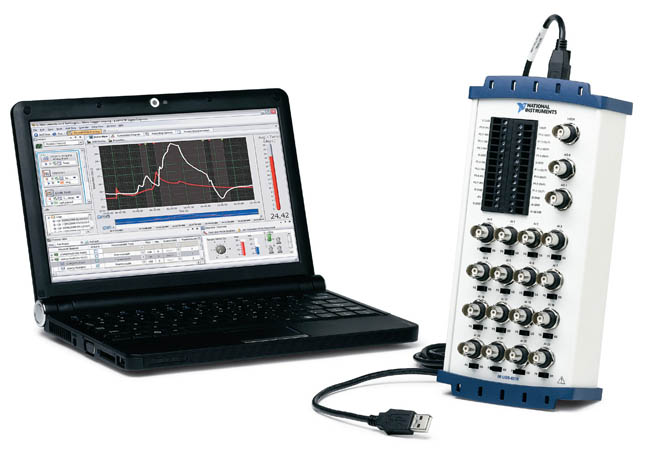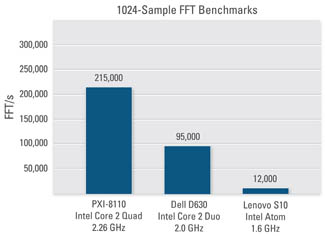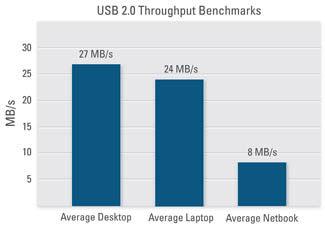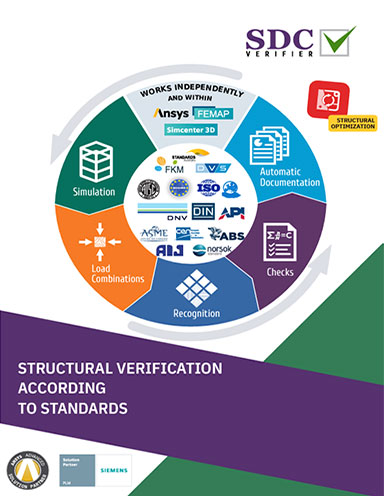Netbook + NI DA Make for Low-Cost Virtual Instrumentation
Netbooks are a compelling new deployment platform for data logging, simple signal analysis, and mobile measurements.
Latest News
November 1, 2009
By Nathan Yang
Since the introduction of the first PC in the early 1970s, engineers, scientists, and professionals have embraced its ability to simplify their daily tasks. PCs evolved from an academic and hobbyist contraption to a powerful platform, helping reduce product-development time, automate repetitive tasks, advance computationally intensive science, and more.
 Figure 1: Bus-powered USB data acquisition products work well with netbooks because they offer high-performance I/O in a small, portable form factor. |
Instrumentation and data logging have also significantly evolved since the early days of large, single-function desktop boxes. Virtual instrumentation replaces traditional boxed instruments by combining a software-defined PC-based system with modular analog and digital data acquisition (DAQ) hardware—a solution called virtual instruments. The advent of netbooks introduced a new, lower-cost, and more portable computing platform for virtual instrumentation than previous solutions.
Netbooks Prove Popular
Netbooks are defined as much by their features as their lack thereof. In fact, the term “netbook” drew more than 36 million hits on Google recently without a universally recognized definition. In a razor-thin margin industry, PC manufacturers are still changing the features of netbooks in an attempt to capture more market share and outsmart the competition.
Most netbooks offer an eight- to 10-in. screen, Windows XP or Linux OS, wireless networking, and USB connectivity. They typically do not have optical drives, full-sized keyboards, HDMI connectivity, or the ability to run processor-intensive applications. At the core of a netbook is a low-power processor. Most netbooks are equipped with the Intel Atom, a 1.6GHz CPU that consumes a maximum of 2.5W—an insignificant power draw compared to a typical Core Duo notebook processor, which requires up to 30W.
Netbooks provide a radically different approach to computing by adeptly addressing 80 percent of standard laptop use cases for less than $400. A small and mobile PC is not a new concept, but this is the first to gain widespread adoption. Previous attempts (including miniature laptops and PDAs) offered insufficient battery life, uncommon processors, and other usability limitations. The new netbooks address most of these trade-offs with respectable computing power and, most importantly, compatibility with widespread Windows x86 software applications.
 This table illustrates a feature comparison for typical computing devices. |
New Virtual Instrumentation Platform
A wide variety of PC-based data acquisition devices exist on the market, from plug-in PCI Express boards to external plug-and-play USB devices. Because of the external nature, low-power requirements, and more than adequate data rates, bus-powered USB data acquisition devices are a perfect match for netbook-based virtual instrumentation. However, engineers and scientists must be aware of a set of important limitations as netbooks are not drop-in replacements for standard desktops or laptops.
First, consider the core component of a netbook, the Atom processor. These processors support hyperthreading, a proprietary technology from Intel used to process two threads simultaneously on a single core with unused resources. Hyperthreading does not provide true parallelism like dual-core processors, but it does deliver significant performance improvements for multithreaded software applications. Performing benchmarks for 1024-sample fast Fourier transforms (FFTs), a very common type of signal processing, were at approximately 8kFFTps on a single thread. Running two threads increased the overall performance by 50 percent to 12kFFTps.
As shown in Figure 2, which is a benchmark chart comparing FFT performance, netbooks deliver substantially lower performance than standard laptops and quad-core processors. However, 12 kFFTps is sufficient for most basic measurement and data logging applications.
 Figure 2: Benchmark Chart Comparing FFT Performance. |  Figure 3: Benchmark Chart Comparing USB Throughput. |
Next is the most noticeable attribute of a netbook: its size. Typically weighing less than three pounds, netbooks are the smallest and lightest family of x86 computing devices on the market, a plus. And while the screen size makes for a compact shape, it poses a challenge in usability, with most Web pages barely fitting in the WSVGA screen resolution of 1024 x 600. They also require more scrolling because of their short vertical view. This is especially noticeable when viewing large amounts of data or programming in either text-based or graphical programming environments.
A third consideration is storage. Netbooks can provide plenty of disk storage, especially when equipped with a rotating hard-disk drive (HDD). Solid-state drives, on the other hand, are more energy-efficient, but often offer inadequate storage space and can cost substantially more. An SSD-equipped netbook typically features only 8GB of storage.
A fourth consideration is peripheral and network connectivity. Because of the Atom’s 945 chipset, most standard PC connectivity options are available, including Ethernet, USB, 802.11g, and ExpressCard. As can be seen in Figure 3, a benchmark chart comparing USB throughput, netbook USB 2.0 performance typically peaks at 8 MBps, much less than a conventional laptop or desktop. Nevertheless, this is more than sufficient for typical low channel-count applications—one can still perform 4 million 16-bit measurements per second.
Software Considerations
The adoption of Linux OS with netbooks has increased partially because of higher Microsoft Windows OS licensing fees. However, these do not offer strong third-party software support, and Linux distribution-specific hardware drivers are hard to find. These limitations also apply to the virtual instrumentation space, confining Linux-based netbooks to mostly Web browsing and basic computing. Thus, for most engineering and scientific applications, it is recommended to use either Windows XP or Windows 7.
Any application software running on a netbook also needs to take into consideration the smaller screen size. Flexible user interface (UI) tools with a large library of customizable objects can help maximize the display area and provide a comfortable user interface.
In addition, because of improved performance seen earlier due to the availability of hyperthreading on Atom processors, users should ensure that their software applications are multithreaded. This can be achieved by selecting an inherently multithreaded programming environment like NI LabVIEW, or by explicitly implementing it in a standard programming environment such as Microsoft Visual Studio.
Finally, to use a netbook for virtual instrumentation with any pre-developed end-user software, it’s imperative to make sure that it can be properly operated at a resolution of 1024 x 600, 168 fewer pixel rows than the standard 1024 x 768.
Windows operating systems typically work best for engineering and scientific purposes, and choosing the right software development environment can help maximize the use of netbook resources. For processor-intensive applications, netbooks can offload demanding computing algorithms to standard desktops or large servers through Ethernet and wi-fi connectivity.
Netbooks are a compelling new deployment platform for data logging, simple signal analysis, and mobile measurements. And when all the pluses and minuses are examined thoroughly, most engineers will see that netbooks can significantly lower the cost of virtual instrumentation in a highly portable form factor.
More Info:
The Math Works
Nathan Yang is the product manager for data acquisition at National Instruments. You can send e-mail about this article to [email protected].
Subscribe to our FREE magazine, FREE email newsletters or both!
Latest News
About the Author
DE’s editors contribute news and new product announcements to Digital Engineering.
Press releases may be sent to them via [email protected].





